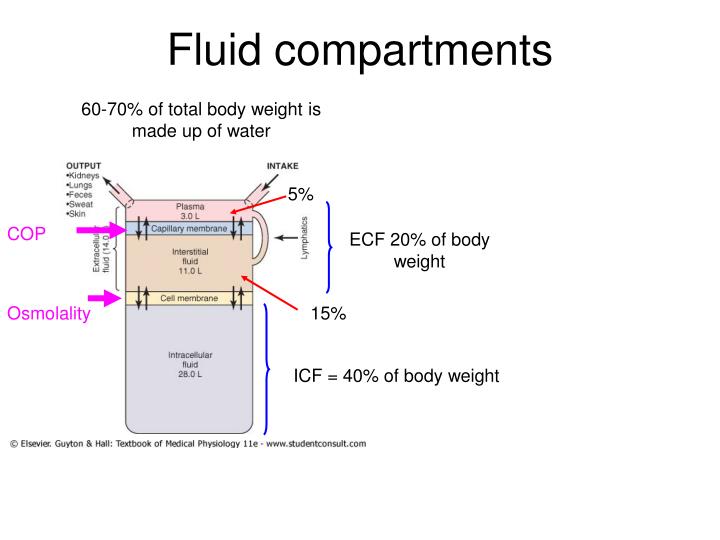

The pressure exerted on the capillary membrane by blood pressure and cardiac output is known as hydrostatic pressure within the capillary.

Proteins, predominantly albumin but also globulins, fibrinogen, and others, are the natural particles in blood that cause COP. The amount of fluid that passes through the capillary “membrane” is determined by several factors, including capillary colloid oncotic pressure (COP), hydrostatic pressure, and permeability, which is determined by the endothelial glycocalyx layer (EGL) and the pore diameters between the cells. Any particle movement between the interstitium and the cell must go through some sort of transport system (eg, channel, ion pump, carrier mechanism).īody Fluid Compartment indicating the Intracellular, Interstitial fluidįluids are constantly moving over the endothelial membrane of capillaries, across the interstitium, and into and out of cells. Water passes through this membrane freely, but minute and big molecular weight particles do not.

A cell membrane separates the intracellular compartment from the interstitial space. The matrix and cells within the interstitial space are supported by fluids. The gap between the capillaries and the cells is known as the interstitial compartment. Water and small-molecular-weight particles like as electrolytes, glucose, acetate, lactate, gluconate, and bicarbonate pass effortlessly through this capillary “membrane.” Gases such as oxygen and carbon dioxide can freely pass through this membrane and enter or depart the intravascular compartment by following their concentration gradient. The endothelial glycocalyx, endothelial cells, and the subendothelial cell matrix form the capillary “membrane,” which separates the capillary intravascular region from the interstitial fluid compartment. Capillaries transport fluid from the intravascular to the interstitial and intracellular compartments. Intravascular, interstitial, and intracellular fluid compartments are the three major bodily fluid compartments.


 0 kommentar(er)
0 kommentar(er)
